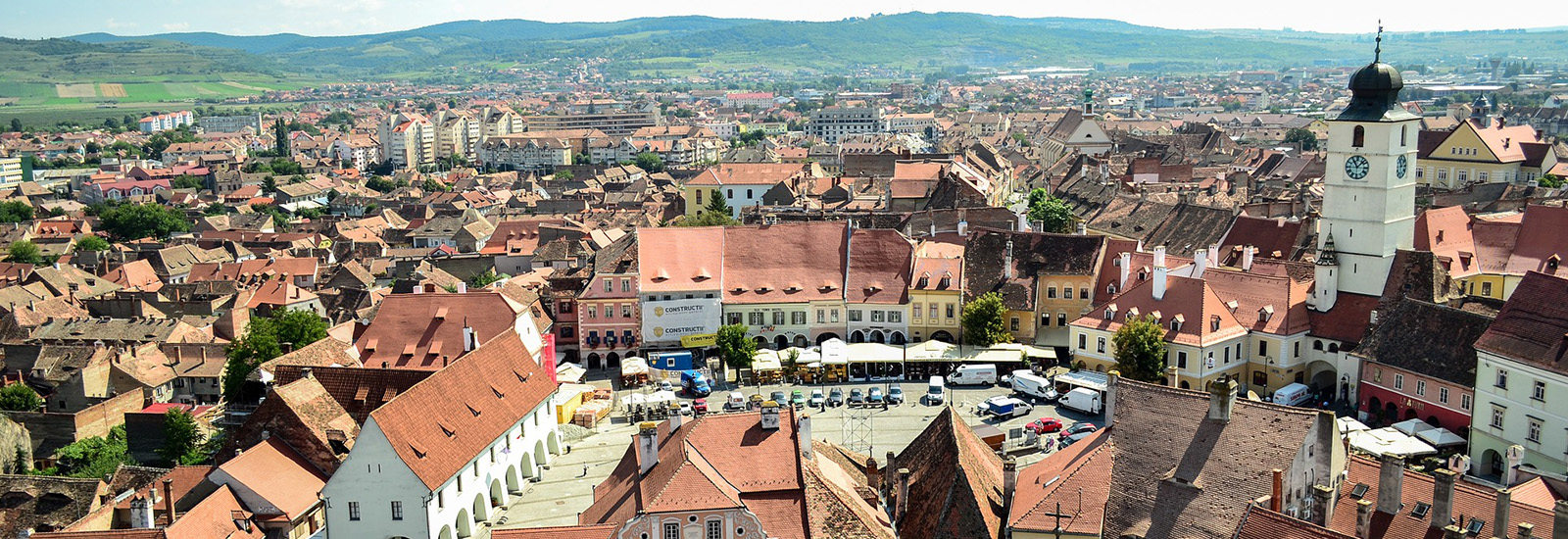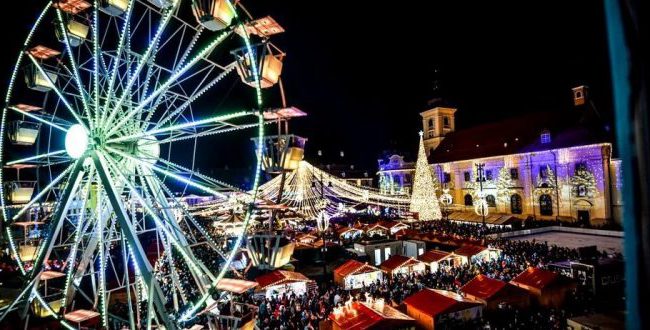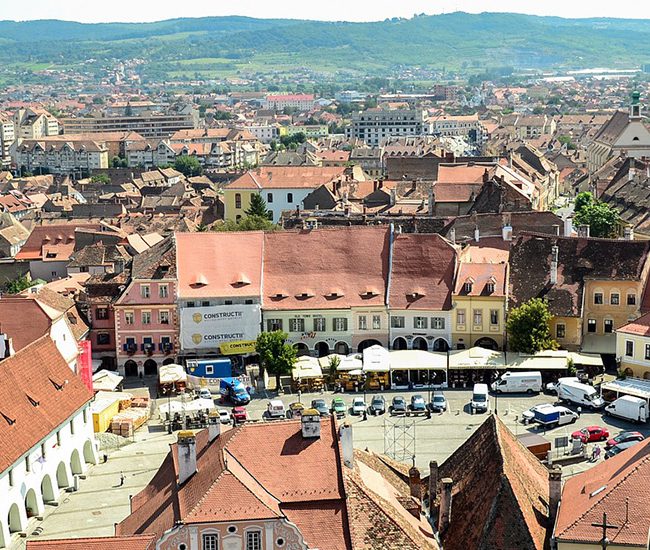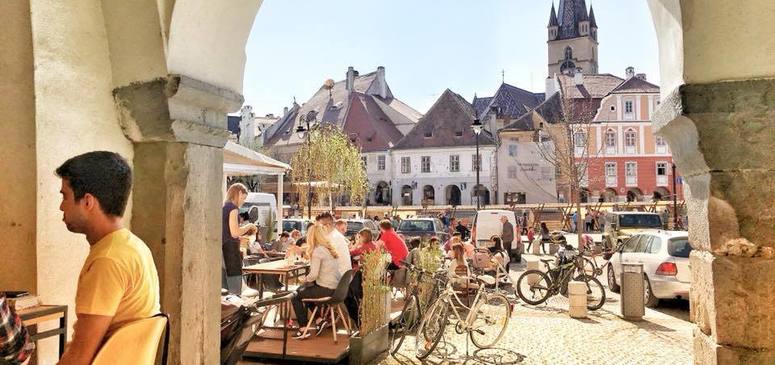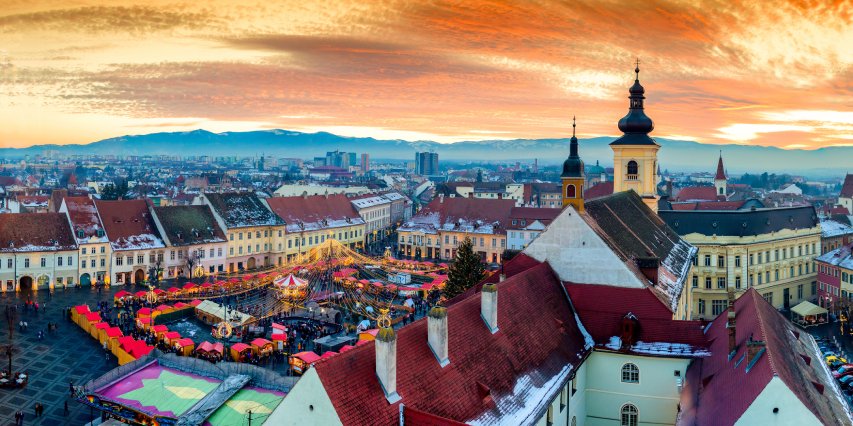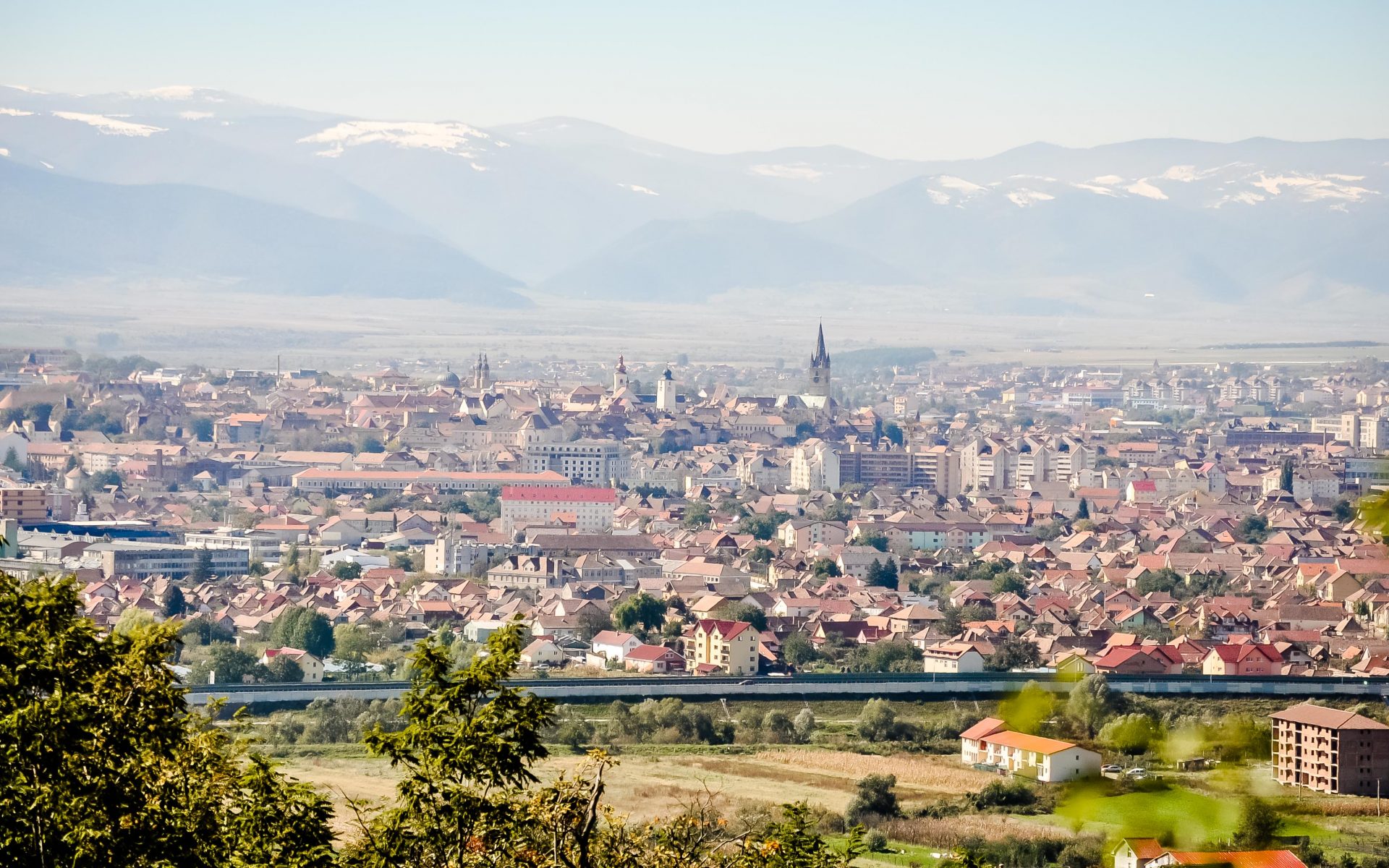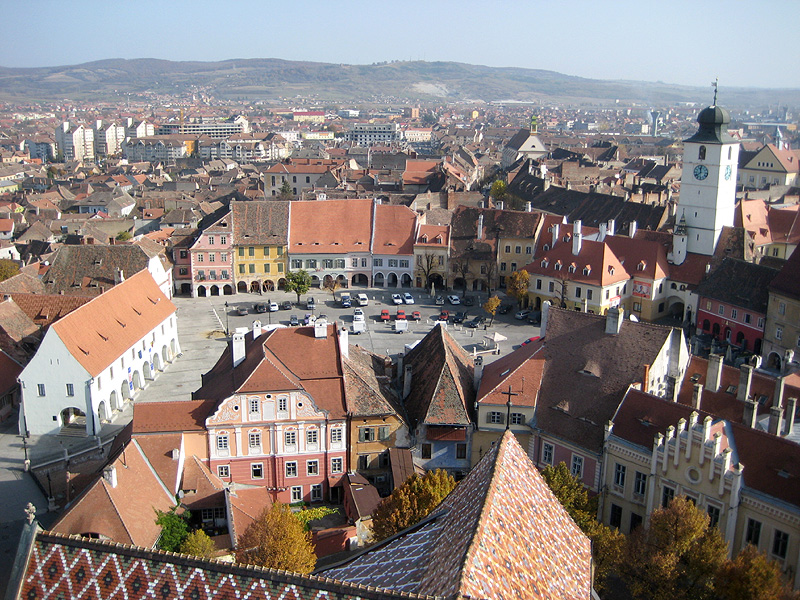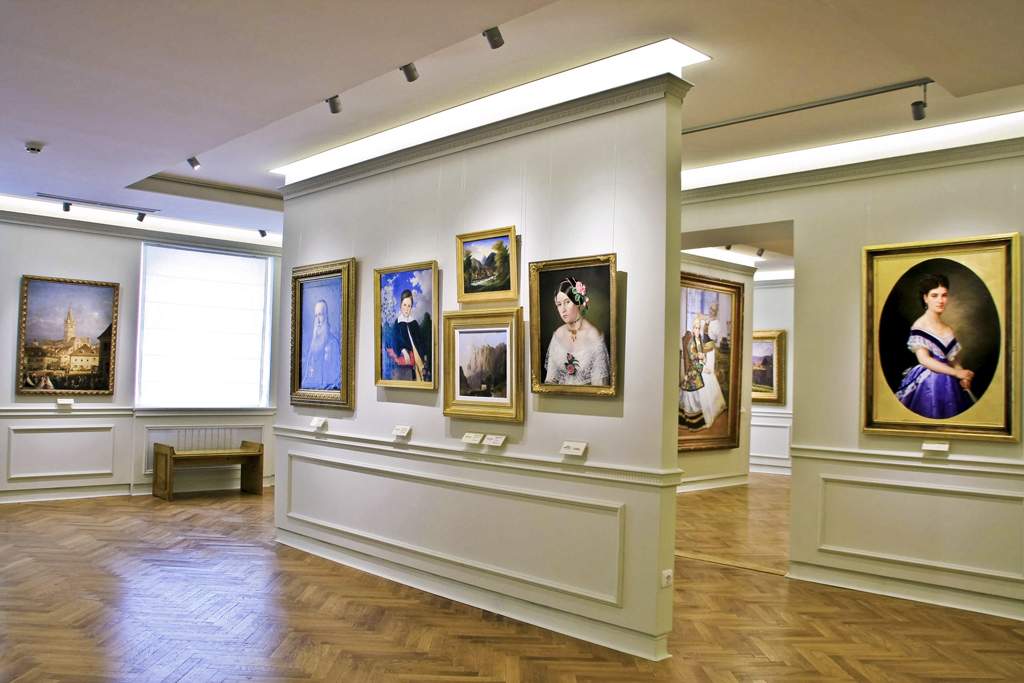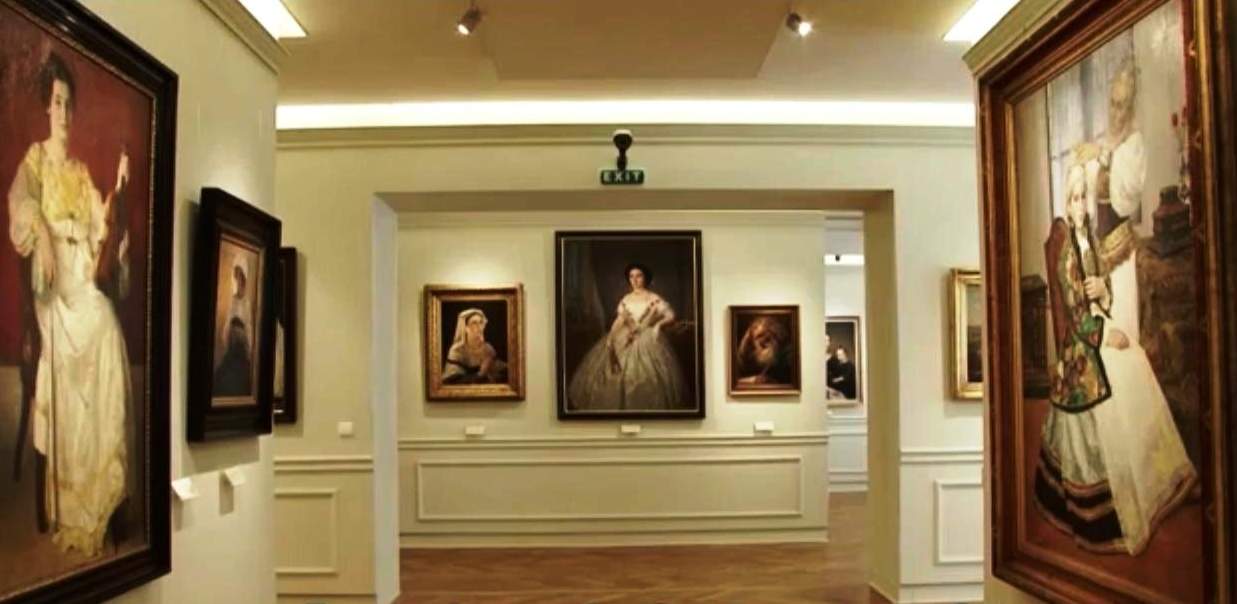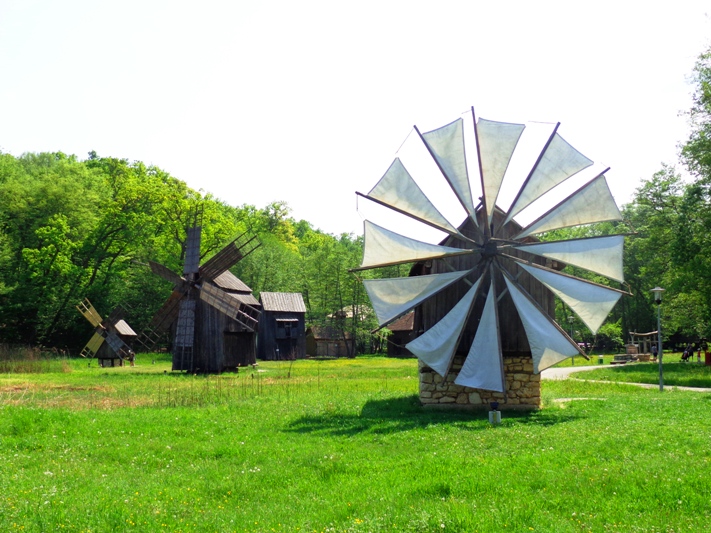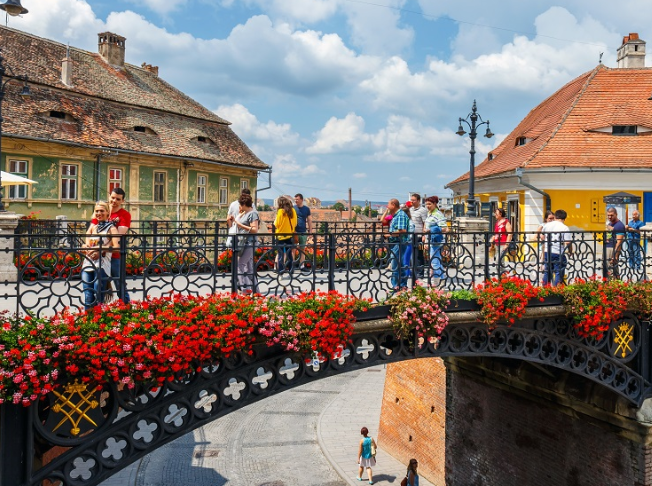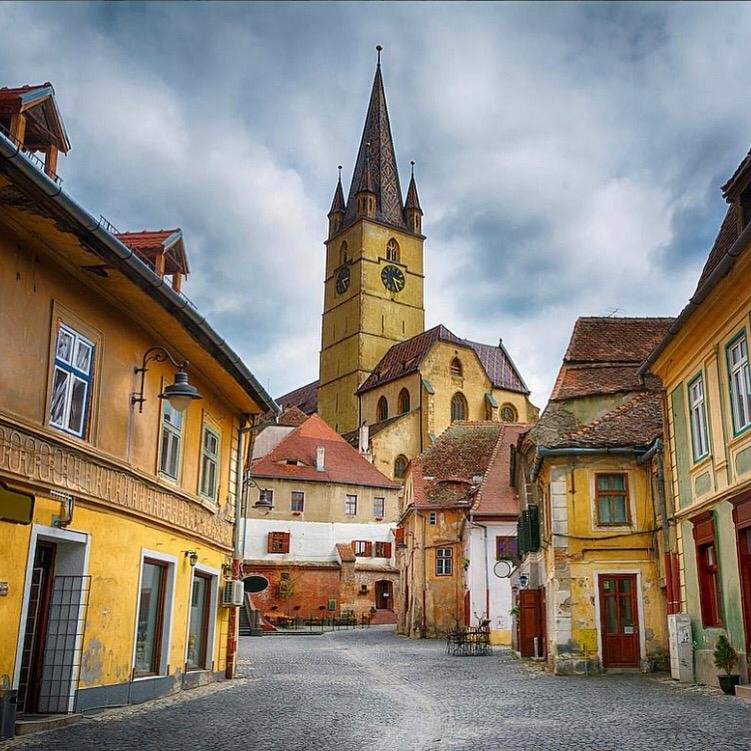We invite you to visit Sibiu, the most charming city in Romania, a place defined by its joie de vivre and soothing atmosphere in summer and fairy-like Christmas Market in winter.
Hystory of the City
Known in German under the name Hermannstadt, Sibiu has always been the most important center of the German minority in Transylvania
Legend has it that the lost children of Hamelin came out of the ‘Almasch’ caves (Varghis) in Transilvania, somewhere near the nowadays location of Sibiu.
Known in German under the name Hermannstadt, Sibiu has always been the most important center of the German minority in Transylvania
Legend has it that the lost children of Hamelin came out of the ‘Almasch’ caves (Varghis) in Transilvania, somewhere near the nowadays location of Sibiu. This is the romanticized explanation of a unique phenomenon that explains the appearance of a blond-haired blue-eyed people on these lands, who spoke German and lived by the customs of peoples living thousands of kilometers away.
In effect, the fortresses and fortified villages in Transylvania were founded in the 12th century by immigrants coming from the Moselle valley area, known under the name of Saxons. The first documentary mentioning referring to the Sibiu area dates back from 1191, when Pope Celestine III confirmed the existence of the free prepositure of the Germans in Transylvania, the prepositure having its headquarters in Sibiu, named Cibinium at that time.
Brought here by the Hungarian kings, the Saxons were granted numerous rights and benefits in exchange for their help in defending the lands against the attacks of the Tatars and Turks. They created ‘the land of the 7 fortresses’, 7 fortified cities, as well as numerous villages in which fortified churches were erected to serve as a shelter in the event of an attack.
At the beginning of the 20th century, Sibiu is a vibrant city, tuned to the realities of its time, the third city in the Austro-Hungarian Empire using the electric lighting system and the second city in which the electric tram is produced. The first cinema house opens in 1909 and the first public toilets appear in 1910.
The name of the city is officially changed into Sibiu in 1919, and the streets received Romanian names as well. In 1945, after the Second World War, the deportation of the Germans to the USSR began. A number of 2800 persons of German ethnicity were deported, many of them never to return. With but a few exceptions, the communist regime never tampered with the old city, and Sibiu becomes in 1968, under the same name, the county residents. On December 21st, 1989 the anti-communist demonstrations begin in Sibiu and continue on December 22nd. Sibiu was the second city in the country after Timisoara to rise against the communist dictatorship.



